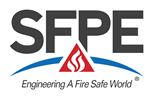FEMTC 2020
Multiparametric CFD Analyses To Understand The Key Variables In Car Park Smoke Control 
Wojciech Węgrzyński - Building Research Institute (ITB), Poland
Abstract
CFD method is routinely used in the assessment of the fire safety of car parks. Authors connect the great success of this method with the general unpredictability of the airflow within complex enclosed-car parks in fires. We argue that one cannot design a cost-effective smoke control solution without proper assessment of its performance with use of numerical modelling. However, the influence of the various aspects of the car park architecture, potential development of fires and operational parameters of smoke control systems of various types is rarely evaluated together. We have an abundance of case studies where one solution was fit to a single car park (and adjusted until it worked out), but lack a wider view on what magnitude of consequences is introduced by changing one variable of the simulation.
In order to answer these questions we have proposed a multiparametric analysis to understand the impact of key variables in car park smoke control. In this project we have performed a total number of 480 CFD simulations (in FDS v.6.6.0) of a 2500 m2 car park.
The key variables were:
- Size and development of the fire – in total 12 different fires were used that differed in growth and maximum HRR.
- Height of the car park – 5 different heights from 240 cm to 360 cm.
- Smoke control systems and their operational parameters (including natural smoke control, ducted SHEVS and jet-fan based solutions).
The simulations were separated into two batches – one included evacuation phase (growth of fire) analyses, and the second a constant max. HRR in a car-park (firefighter entry). To perform this large project we have developed python scripts to generate and run all the scenarios as well as custom post-processing scripts. A novel safety index method was proposed, that provides unbiased qualitative assessment of the system performance, based on the observed smoke concentration and temperature within chosen parts of the car-park, including the proximity of emergency exits. These process optimization techniques will be presented along with the key findings of the study.
Presentation
Resources
| Paper | Presentation | ||
|---|---|---|---|
| HTML | HTML | ||
| Resources Archive File (.zip) | |||

